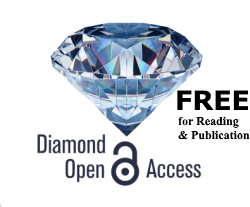Abstract
Different solutions of royal jelly, royal jelly and
rape honey mix, and rape honey (2, 5, 10, 20, and 30%) were contaminated with bacterial suspension of Aeromonas hydrophila (ATCC 7965). Colony
counts for each test substances were determined after incubation for 24 h and
48 h and those concentrations which completely inhibited the growth of the
test strain were assigned as Real Bactericidal Concentration (RBC) or 100% inhibition. Royal jelly and rape honey mixes possessed a
lower antibacterial activity than rape honey. The concentrations of royal
jelly (10, 20, and 30%) had a total inhibitory effect against A. hydrophila (ATCC 7965). Royal jelly,
royal jelly and rape honey mix, and rape honey have a potential as alternative
therapeutic agents against A. hydrophila.
References
- Al Jabri, A.A., Al Hosni, S.A., Nzeako, B.C., Al Mahrooqi, Z.H., Nsanze H. (2005): Antibac¬terial activity of Omani honey alone and in combination with gentamicin. Saudi Medical Journal, 26(5): 767-771.
- Anonymous (2007): Commission regulation (EC) No 1441/2007 of 5 December 2007 amending Regulation (EC) No 2073/2005 on microbiological criteria for foodstuffs (Text with EEA relevance). Official Journal of the European Union. L, 322: 12-29.
- Balkanska, R., Zhelyazkova, I., Ignatova, M. (2012): Physico-chemical quality characteristics of royal jelly from three regions of Bulgaria. Agricultural Science and Technology, 4(3): 302-305.
- Baltrusaityte, V., Venskutonis, P.R., Ceksteryte, V. (2007): Antibacterial activity of honey and beebread of different origin against S-aureus and S-epidermidis. Food Technology and Biotechnology, 45(2): 201-208.
- Blum, M.S., Novak, A.F., Taber, S. (1959): 10-Hydroxy-Δ2-decenoic acid, an antibiotic found in royal jelly. Science, 130(3373): 452-453.
- Bogdanov, S., Martin, P., Lullman, C. (1997): Harmonized methods of the European Honey Commission. Apidologie, Extra Issue: 1-59.
- Campbell, J.R. (2001): Infectious complications of lawn mower injuries. Pediatric Infectious Disease Journal, 20(1): 60-62.
- Castro, S.B.R., Leal, C.A.G., Freire, F.R., Carvalho, D.A., Oliveira, D.F., Figueiredo H.C.P. (2008): Antibacterial activity of plant extracts from Brazil against fish pathogenic bacteria. Brazilian Journal of Microbiology, 39(4): 756-760.
- Devillers, J., Morlot, M., Pham-Delegue, M.H., Dorе, J.C. (2004): Classification of monofloral honeys based on their quality control data. Food Chemistry, 86(2): 305-312.
- Dinkov, D. (2003): A scientific note on the specific optical rotation of three honey types from Bulgaria. Apidologie, 34(3): 319-320.
- Dinkov, D. (2000): A report on the Bulgarian bee honey ripeness according to amount of the aminoacid praline. Acta Entomologica Bulgarica, Suplement 1, 71-74.
- Fujiwara, S., Imai, J., Fujiwara, M., Yaeshima, T., Kawashima, T., Kobayashi, K. (1990): A potent antibacterial protein in royal jelly. Purification and determination of the primary structure of royalisin. The Journal of Biological Chemistri, 265(19): 11333-11337.
- Gethin, G., Cowman, S. (2008): Bacteriological changes in sloughy venous leg ulcers treated with manuka honey or hydrogel: an RCT. Journal of Wound Care, 17(6): 241-244, 246-247.
- Hiransuthikul, N., Tantisiriwat, W., Lertutsahakul, K., Vibhagool, A., Boonma, P. (2005): Skin and soft-tissue infections among tsunami survivors in Southern Thailand. Clinical Infectious Diseases, 41(15): e93-e96.
- Izuta, H., Chikaraishi, Y., Shimazawa, M., Mishima, S., Hara, H. (2009): 10-Hydroxy-2-decenoic acid, a major fatty acid from royal jelly, inhibits VEGF-induced angiogenesis in human umbilical vein endothelial cells. Evidence-Based Complementary and Alternative Medicine, 6(4): 489-494.
- Krauze, A., Zalewski, R.I. (1991): Classification of honeys by principal component analysis on the basis of chemical and physical parameters. Zeitschrift für Lebensmittel-Untersuchung und Forschung, 192(1): 19-23.
- Leung, R., Ho, A., Chan, J., Choy, D., Lai, C.K. (1997): Royal jelly consumption and hypersensitivity in the community. Clinical and Experimental Allergy, 27(3): 333-336.
- Li, J., Feng, M., Begna, D., Fang, Y., Zheng, A.J. (2010): Proteome comparison of hypopharyngeal gland development between Italian and royal jelly-producing worker honeybees (Apis mellifera L). Journal of Proteome Research, 9(12): 6578-6594.
- Li, J., Wang, T., Peng, W.J. (2007): Comparative analysis of the effects of different storage conditions on major royal jelly proteins. Journal of Apicultural Research, 46(2): 73-80.
- Lombardi, C., Senna, G.E., Gatti, B., Feligioni, M., Riva, G., Bonadonna, P., Dama, A.R., Canonica, G.W., Passalacqua, G. (1998): Allergic reactions to honey and royal jelly and their relationship with sensitization to compositae. Allergologia et Immunopathologia, 26(6): 288-290.
- Mavric, E., Wittmann, S., Barth, G., Henle, T. (2008): Identification and quantification of methylglyoxal as the dominant antibacterial constituent of Manuka (Leptospermum scoparium) honeys from New Zealand. Molecular Nutrition & Food Research, 52(4): 483-489.
- Melliou, E., Chinou, I. (2005): Chemistry and bioactivity of royal jelly from Greece. Journal of Agricultural and Food Chemistry, 53(23): 8987-8992.
- Molan, P.C. (1992a): The antibacterial activity of honey: 1. The nature of the antibacterial activity, Bee World, 73(1): 5-28.
- Molan, P.C. (1992b): The antibacterial activity of honey: 2. Variation in the potency of the antibacterial activity. Bee World, 73(2): 59-76.
- Molan, P.C. (1997): Honey as an antimicrobial agent. In: Mizrahi, A., Lensky, Y. (Eds.),
- Bee Products. Properties, Applications, and Apitherapy. Springer Science+Business Media, New York, pp. 27-37.
- Oddo, L.P., Piana, L., Bogdanov, S., Bentabol, A., Gotsiou, P., Kerkvied, J., Martin, P., Morlot, M., Valbuena, A.O., Ruoff, K., von der Ohe, K. (2004): Botanitical species giving unifloral honey in Europe. Apidologie, 35: 82-93.
- Palumbo, S.A., Morgan, D.R., Buchanan, R.T. (1985): Influence of Temperature, NaCI, and pH on the Growth of Aeromonas hydrophila. Journal of Food Science, 50: 1417-1421.
- Piaza, M.G., Oddo, L.P. (2004): Bibliographical review of the main European unifloral honeys. Apidologie, 35: 94-111.
- Sabatini, A.G., Marcazzan, G.L., Caboni, M.F., Bogdanov, S., de Almeida-Muradian, L.B. (2009): Quality and standardisation of Royal Jelly. Journal of ApiProduct and ApiMedical Science, 1(1): 16-21.
- Saito, K., Kohama, J., Sakamoto, Y., Iwasaki, Y., Ito, R., Horie, M., Nakazawa, H. (2011): Determination of proline enantiomers in honey and royal jelly by LC-UV. Journal of Aoac International, 94(2): 482-486.
- Sesta, G. (2006): Determination of sugars in royal jelly by HPLC. Apidologie, 37(1): 84-90.
- Shen, L.R., Ding, M.H., Zhang, L.W., Jin, F., Zhang, W.G., Li., D. (2010): Expression of Acc-Royalisin Gene from Royal Jelly of Chinese Honeybee in Escherichia coli and Its Antibacterial Activity. Journal of Agricultural and Food Chemistry, 58(4): 2266-2273.
- Sherlock, O., Dolan, A., Athman, R., Power, A., Gethin, G., Cowman, S., Humphreys, H. 2010): Comparison of the antimicrobial activity of Ulmo honey from Chile and Manuka honey against methicillin-resistant Staphylococcus aureus, Escherichia coli and Pseudomonas aeruginosa. BMC Complementary and Alternative Medicine, 10: 47.
- Stratev, D., Dinkov, D., Vashin, I. (2012): Antibacterial effect of extracts from Bulgarian’s “poplar” propolis and Smoke tree (Cotinus coggigria Scop.) against Aeromonas hydrophila (ATCC 7965). Revue de Medecine Veterinaire, 163(10): 443-447.
- Takahama, H., Shimazu, T. (2006): Food-induced anaphylaxis caused by ingestion of royal jelly. The Journal of Dermatology, 33(6): 424-426.
- von der Ohe, W., von der Ohe, K. (1996): Charakterisierung einheimischer Rapshonige. Deutsches Bienen Journal, 4: 438-443.
- von der Ohe, W., Piana, M.L., Morlot, M., Martin, P. (2004): Harmonized methods of melissopalynology. Apidologie, 35: 18-25.
- Wilkinson, J.M., Cavanagh, H.M.A. (2005): Antibacterial activity of 13 honeys against Escherichia coli and Pseudomonas aeruginosa. Journal of Medicinal Food, 8(1): 100-103.
Abstract
References
- Al Jabri, A.A., Al Hosni, S.A., Nzeako, B.C., Al Mahrooqi, Z.H., Nsanze H. (2005): Antibac¬terial activity of Omani honey alone and in combination with gentamicin. Saudi Medical Journal, 26(5): 767-771.
- Anonymous (2007): Commission regulation (EC) No 1441/2007 of 5 December 2007 amending Regulation (EC) No 2073/2005 on microbiological criteria for foodstuffs (Text with EEA relevance). Official Journal of the European Union. L, 322: 12-29.
- Balkanska, R., Zhelyazkova, I., Ignatova, M. (2012): Physico-chemical quality characteristics of royal jelly from three regions of Bulgaria. Agricultural Science and Technology, 4(3): 302-305.
- Baltrusaityte, V., Venskutonis, P.R., Ceksteryte, V. (2007): Antibacterial activity of honey and beebread of different origin against S-aureus and S-epidermidis. Food Technology and Biotechnology, 45(2): 201-208.
- Blum, M.S., Novak, A.F., Taber, S. (1959): 10-Hydroxy-Δ2-decenoic acid, an antibiotic found in royal jelly. Science, 130(3373): 452-453.
- Bogdanov, S., Martin, P., Lullman, C. (1997): Harmonized methods of the European Honey Commission. Apidologie, Extra Issue: 1-59.
- Campbell, J.R. (2001): Infectious complications of lawn mower injuries. Pediatric Infectious Disease Journal, 20(1): 60-62.
- Castro, S.B.R., Leal, C.A.G., Freire, F.R., Carvalho, D.A., Oliveira, D.F., Figueiredo H.C.P. (2008): Antibacterial activity of plant extracts from Brazil against fish pathogenic bacteria. Brazilian Journal of Microbiology, 39(4): 756-760.
- Devillers, J., Morlot, M., Pham-Delegue, M.H., Dorе, J.C. (2004): Classification of monofloral honeys based on their quality control data. Food Chemistry, 86(2): 305-312.
- Dinkov, D. (2003): A scientific note on the specific optical rotation of three honey types from Bulgaria. Apidologie, 34(3): 319-320.
- Dinkov, D. (2000): A report on the Bulgarian bee honey ripeness according to amount of the aminoacid praline. Acta Entomologica Bulgarica, Suplement 1, 71-74.
- Fujiwara, S., Imai, J., Fujiwara, M., Yaeshima, T., Kawashima, T., Kobayashi, K. (1990): A potent antibacterial protein in royal jelly. Purification and determination of the primary structure of royalisin. The Journal of Biological Chemistri, 265(19): 11333-11337.
- Gethin, G., Cowman, S. (2008): Bacteriological changes in sloughy venous leg ulcers treated with manuka honey or hydrogel: an RCT. Journal of Wound Care, 17(6): 241-244, 246-247.
- Hiransuthikul, N., Tantisiriwat, W., Lertutsahakul, K., Vibhagool, A., Boonma, P. (2005): Skin and soft-tissue infections among tsunami survivors in Southern Thailand. Clinical Infectious Diseases, 41(15): e93-e96.
- Izuta, H., Chikaraishi, Y., Shimazawa, M., Mishima, S., Hara, H. (2009): 10-Hydroxy-2-decenoic acid, a major fatty acid from royal jelly, inhibits VEGF-induced angiogenesis in human umbilical vein endothelial cells. Evidence-Based Complementary and Alternative Medicine, 6(4): 489-494.
- Krauze, A., Zalewski, R.I. (1991): Classification of honeys by principal component analysis on the basis of chemical and physical parameters. Zeitschrift für Lebensmittel-Untersuchung und Forschung, 192(1): 19-23.
- Leung, R., Ho, A., Chan, J., Choy, D., Lai, C.K. (1997): Royal jelly consumption and hypersensitivity in the community. Clinical and Experimental Allergy, 27(3): 333-336.
- Li, J., Feng, M., Begna, D., Fang, Y., Zheng, A.J. (2010): Proteome comparison of hypopharyngeal gland development between Italian and royal jelly-producing worker honeybees (Apis mellifera L). Journal of Proteome Research, 9(12): 6578-6594.
- Li, J., Wang, T., Peng, W.J. (2007): Comparative analysis of the effects of different storage conditions on major royal jelly proteins. Journal of Apicultural Research, 46(2): 73-80.
- Lombardi, C., Senna, G.E., Gatti, B., Feligioni, M., Riva, G., Bonadonna, P., Dama, A.R., Canonica, G.W., Passalacqua, G. (1998): Allergic reactions to honey and royal jelly and their relationship with sensitization to compositae. Allergologia et Immunopathologia, 26(6): 288-290.
- Mavric, E., Wittmann, S., Barth, G., Henle, T. (2008): Identification and quantification of methylglyoxal as the dominant antibacterial constituent of Manuka (Leptospermum scoparium) honeys from New Zealand. Molecular Nutrition & Food Research, 52(4): 483-489.
- Melliou, E., Chinou, I. (2005): Chemistry and bioactivity of royal jelly from Greece. Journal of Agricultural and Food Chemistry, 53(23): 8987-8992.
- Molan, P.C. (1992a): The antibacterial activity of honey: 1. The nature of the antibacterial activity, Bee World, 73(1): 5-28.
- Molan, P.C. (1992b): The antibacterial activity of honey: 2. Variation in the potency of the antibacterial activity. Bee World, 73(2): 59-76.
- Molan, P.C. (1997): Honey as an antimicrobial agent. In: Mizrahi, A., Lensky, Y. (Eds.),
- Bee Products. Properties, Applications, and Apitherapy. Springer Science+Business Media, New York, pp. 27-37.
- Oddo, L.P., Piana, L., Bogdanov, S., Bentabol, A., Gotsiou, P., Kerkvied, J., Martin, P., Morlot, M., Valbuena, A.O., Ruoff, K., von der Ohe, K. (2004): Botanitical species giving unifloral honey in Europe. Apidologie, 35: 82-93.
- Palumbo, S.A., Morgan, D.R., Buchanan, R.T. (1985): Influence of Temperature, NaCI, and pH on the Growth of Aeromonas hydrophila. Journal of Food Science, 50: 1417-1421.
- Piaza, M.G., Oddo, L.P. (2004): Bibliographical review of the main European unifloral honeys. Apidologie, 35: 94-111.
- Sabatini, A.G., Marcazzan, G.L., Caboni, M.F., Bogdanov, S., de Almeida-Muradian, L.B. (2009): Quality and standardisation of Royal Jelly. Journal of ApiProduct and ApiMedical Science, 1(1): 16-21.
- Saito, K., Kohama, J., Sakamoto, Y., Iwasaki, Y., Ito, R., Horie, M., Nakazawa, H. (2011): Determination of proline enantiomers in honey and royal jelly by LC-UV. Journal of Aoac International, 94(2): 482-486.
- Sesta, G. (2006): Determination of sugars in royal jelly by HPLC. Apidologie, 37(1): 84-90.
- Shen, L.R., Ding, M.H., Zhang, L.W., Jin, F., Zhang, W.G., Li., D. (2010): Expression of Acc-Royalisin Gene from Royal Jelly of Chinese Honeybee in Escherichia coli and Its Antibacterial Activity. Journal of Agricultural and Food Chemistry, 58(4): 2266-2273.
- Sherlock, O., Dolan, A., Athman, R., Power, A., Gethin, G., Cowman, S., Humphreys, H. 2010): Comparison of the antimicrobial activity of Ulmo honey from Chile and Manuka honey against methicillin-resistant Staphylococcus aureus, Escherichia coli and Pseudomonas aeruginosa. BMC Complementary and Alternative Medicine, 10: 47.
- Stratev, D., Dinkov, D., Vashin, I. (2012): Antibacterial effect of extracts from Bulgarian’s “poplar” propolis and Smoke tree (Cotinus coggigria Scop.) against Aeromonas hydrophila (ATCC 7965). Revue de Medecine Veterinaire, 163(10): 443-447.
- Takahama, H., Shimazu, T. (2006): Food-induced anaphylaxis caused by ingestion of royal jelly. The Journal of Dermatology, 33(6): 424-426.
- von der Ohe, W., von der Ohe, K. (1996): Charakterisierung einheimischer Rapshonige. Deutsches Bienen Journal, 4: 438-443.
- von der Ohe, W., Piana, M.L., Morlot, M., Martin, P. (2004): Harmonized methods of melissopalynology. Apidologie, 35: 18-25.
- Wilkinson, J.M., Cavanagh, H.M.A. (2005): Antibacterial activity of 13 honeys against Escherichia coli and Pseudomonas aeruginosa. Journal of Medicinal Food, 8(1): 100-103.
Details
| Journal Section | Research Article |
|---|---|
| Authors | |
| Publication Date | February 2, 2015 |
| Submission Date | January 9, 2015 |
| Published in Issue | Year 2015 Volume: 1 Issue: 2 |
Journal is licensed under a
CreativeCommons Attribtion-ShareAlike 4.0 International Licence 


Diamond Open Access refers to a scholarly publication model in which journals and platforms do not charge fees to either authors or readers.
Open Access Statement:
This is an open access journal which means that all content is freely available without charge to the user or his/her institution. Users are allowed to read, download, copy, distribute, print, search, or link to the full texts of the articles, or use them for any other lawful purpose, without asking prior permission from the publisher or the author. This is in accordance with the BOAI definition of open access.
Archiving Policy:
Archiving is done according to ULAKBİM "DergiPark" publication policy (LOCKSS).

